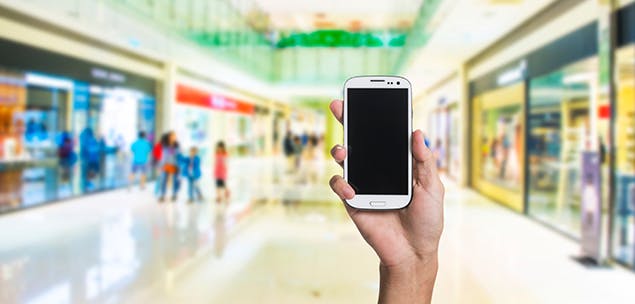In the next decade, the retailing industry will experience rapid and continuous change and disruption, largely driven by advancements in technology. This will undoubtedly transform the way everyday consumers shop and make their experiences more personalised and unique.
VR is currently held back by the challenges of its digital infrastructure – not yet being able to produce a seamless and workable untethered device. However, in 10 years, VR will undoubtedly be ubiquitous. This will give rise to a more realistic and engaging ‘virtual’ bricks and mortar experience. For example, consumers will be able to try on clothes or sunglasses via an immersive experience, as opposed to being physically in store.
Much like Spielberg’s Minority Reportwhere billboards had super advanced interactive technology; shopping experiences even in physical stores will be highly personalised and tailored to each individual. Imagine walking through an AI-enabled store where the sales representative can identify you on sight and adjust their interaction accordingly. Imagine trying on clothes in the fitting room without having to return to the display shelves to find the right colour and size. We’re already seeing a similar evolution to the online marketing world, with AI technology like Albert delivering targeted marketing to customers – delivering the right message, at the right time, to the right person. And some online platforms utilising AI to creating very different purchasing experiences; saving the consumer the hassle of self-search. In 10 years’ time, this will be on another level again.
Although augmented reality faces restrictions today, it will be everywhere in the next decade. Companies and governments will continue to invest billions in its development and it will start living up to its promises. This tech will improve the quality of consumer experiences – online and offline – and will go beyond the cute little popup characters on your KFC bucket that you experience now.
It’s not out of the question to expect the entire payment process to be simplified through biometric authorisation on devices. Think about how you unlock your iPhone by just putting your face in front of the screen. This essentially means that dropping coin on those fancy new kicks will be totally frictionless – perhaps a little too easy… By then, blockchain for most banks will mean payments from the customer will almost instantaneously fall into the retailer’s account. Although payment is an invisible part of the shopping process even now, developments like this will absolutely revolutionise the way we consume goods and services.
On top of all this, the avalanche of voice in online retail is about to gain serious momentum. To some people, using voice command is much like having a virtual assistant: ordering their devices to wake them up or provide updates on the news. Voice assistance takes the visual aspect out of shopping. So, although I wouldn’t recommend voice ordering a pair of jeans online, it’s still easy and viable for simpler, day-to-day purchases and for fulfilling tasks. It’s also useful for consumer’s who already know the exact brand and size they are after. Consumers are more time-poor and have higher expectations then ever before, and the arduous and sometimes time-consuming steps in the shopping process can cause friction and frustration. Voice command will hopefully help eliminate this and deliver a new dimension to the customer experience.
Brett Raven is the CIO of Big Red Group and will be speaking at the upcoming Online Retailer Expo and Conference on July 25-26that ICC Sydney.

